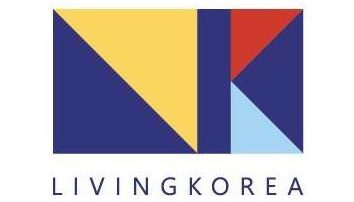Remembering Wheesung: The Life and Legacy of a K-pop Icon
Remembering Wheesung: Reflecting on the Life and Legacy of a K-pop Icon Have you ever wondered about the impact one voice can have over generations of music lovers? The sudden and heart-wrenching departure of South Korean singer Wheesung serves as a poignant reminder of how deeply artists can resonate with our souls. Though his voice may be silenced, his contributions to the music industry will echo far beyond his years. Discovering Wheesung: A Journey to Stardom In the vibrant world of K-pop, Wheesung was a name synonymous with soulful melodies and powerful ballads. Debuting in 2002 with his album 'Like a Movie', Wheesung captured hearts with his emotional depth and technical prowess. His journey from a budding artist to a soulful superstar began with hits like "Insomnia" and "Heartsore Story", showcasing a signature style that blended classic balladry with modern pop sensibilities. As a composer, Wheesung was more than just a performer. He wrote hits for popular groups such as TWICE and soloists like Ailee, crafting an indelible mark across genres. His dual role as a singer and songwriter underlined his artistry, allowing him to leave a multifaceted legacy in the K-pop industry. Through each song, he translated personal experiences into universal emotions, making every note relatable. Tragedy Strikes: The Sudden Loss of a Musical Icon On March 10, 2025, shocking news reverberated through the entertainment world: Wheesung was found unresponsive in his home. At just 43, he left us far too soon, with the cause of death still unknown. Despite the absence of foul play, theories about possible suicide or overdose circulated, prompting an investigation, including a thorough autopsy. Wheesung’s death highlights a pervasive issue in the entertainment industry: the mental and physical toll on artists. Being in the spotlight is both a privilege and a burden, with severe pressures often lurking behind closed doors. For Wheesung, personal struggles intersected with professional setbacks, despite his ongoing passion for music. His untimely passing underscores the importance of support systems for artists battling similar challenges. A Life Embattled: Personal Struggles and Public Recovery Despite a glowing career, Wheesung faced numerous personal trials. A notable incident in 2021 led to his conviction for the illegal use of propofol, a powerful anesthetic. This trial marked a dark chapter that threatened to overshadow his musical achievements. However, like a true artist, he bravely continued to perform, striving to reclaim his place in the hearts of fans. The episode highlights the darker aspects of fame—the high stakes, extreme pressure, and sometimes, the desperate measures some take to cope. It's a solemn reminder that the bright lights of stardom come with shadows that can ensnare even the strongest individuals. The Undying Echo of a Legacy: Tributes and Memories Since Wheesung's death, a cascade of tributes from fans and fellow musicians have surfaced, each one illuminating his influence and emotional connection to his music community. Artists like Rapper Verbal Jint and singer Yun Min-soo expressed their grief and admiration, sharing memories and stories that speak to Wheesung's generous spirit and unwavering commitment to his craft. These tributes paint a picture of a musician who was more than just his music. Wheesung’s legacy isn’t confined to the charts; it lives on in the lives he touched and the inspiration he provided. The outpouring of love illustrates how a single person's art can reach across divides, touching hearts and leaving an enduring imprint. The Impact of Loss: Unfinished Plans and Final Words Tragically, Wheesung’s career was still in progress, with a concert titled "The Story" scheduled for just days after his death. His last Instagram post, filled with excitement and readiness, announced a completed diet and optimism for the upcoming performance. The abrupt cessation of his journey notes the bittersweet nature of life—unpredictable and often cruel in its finality. The concert that never was serves as a metaphor for the unfinished stories we all carry, urging us to appreciate our passions and the people we cherish. It compels us to consider the transience of life and the importance of expressing our gratitude and love before it's too late. Unanswered Questions: The Ongoing Investigation While fans and loved ones mourn, questions about the true circumstances of Wheesung's death remain. Authorities continue to investigate, seeking clarity in the midst of confusion and speculation. The investigation's results may provide answers, but they also highlight the ongoing need for mental health awareness and preventative measures within the high-pressure exploits of fame. Although we may never fully understand the complexities of Wheesung’s life and the pressures he faced, his legacy will continue to inspire. It is a call to action—encouraging transparency, compassion, and proactive support for artists who often bear unseen burdens. In Conclusion: Wheesung’s Enduring Inspiration As we reflect on the life and legacy of Wheesung, we are reminded of the profound ways art influences our world. Through his music, he bridged gaps between emotion and expression, leaving a legacy that no amount of darkness can overshadow. Though the curtain has fallen on his life, Wheesung's spirit perseveres through the music and the memories he's left behind. Let us celebrate his achievements, acknowledge his struggles, and commit to a culture where artists are genuinely supported. In honoring Wheesung, we might ask ourselves: How can we better care for the creators who enrich our lives? How can we ensure a healthier, more inclusive world for those feeling the weight of the spotlight? Let his story be a beacon, urging us towards greater compassion and understanding.









